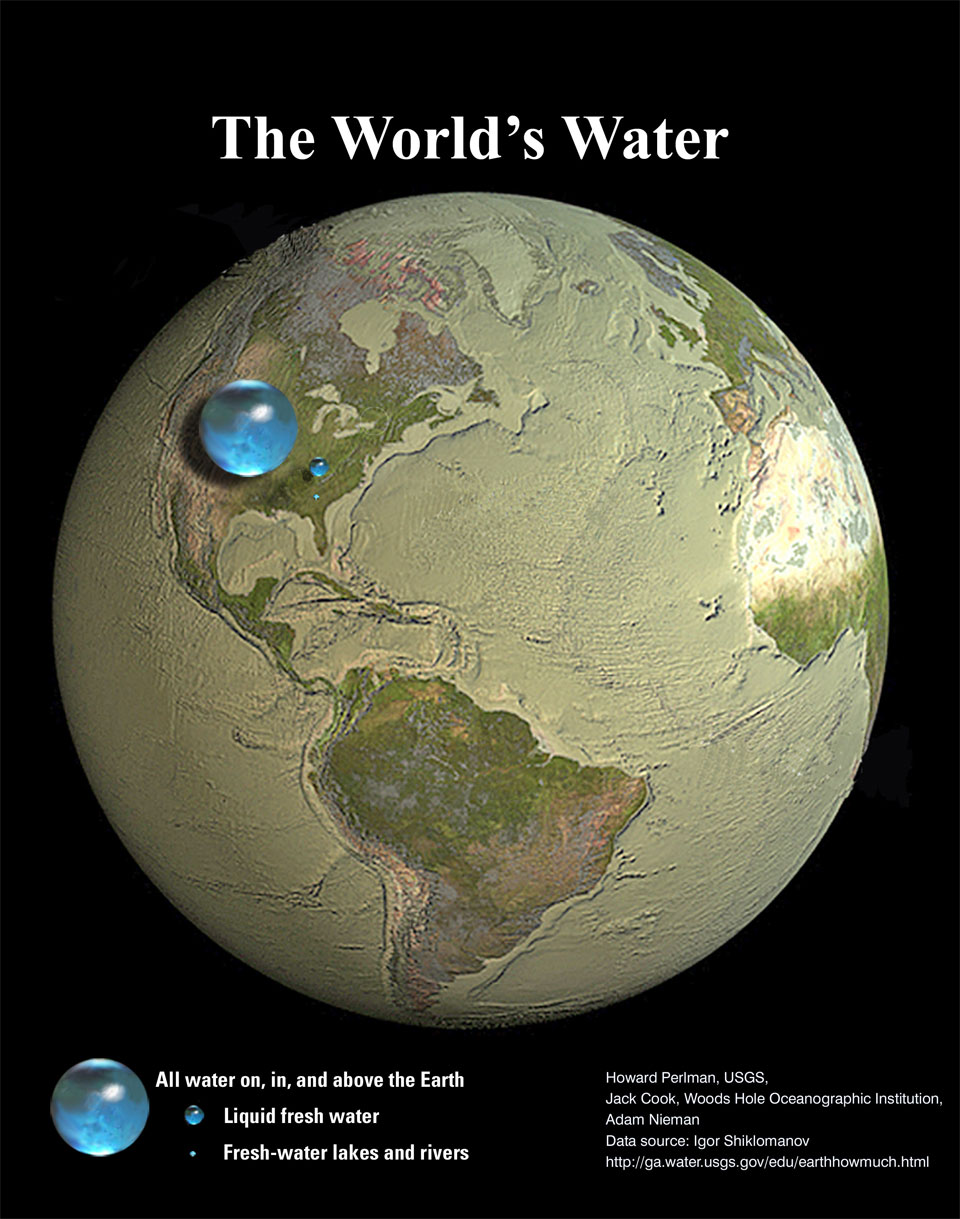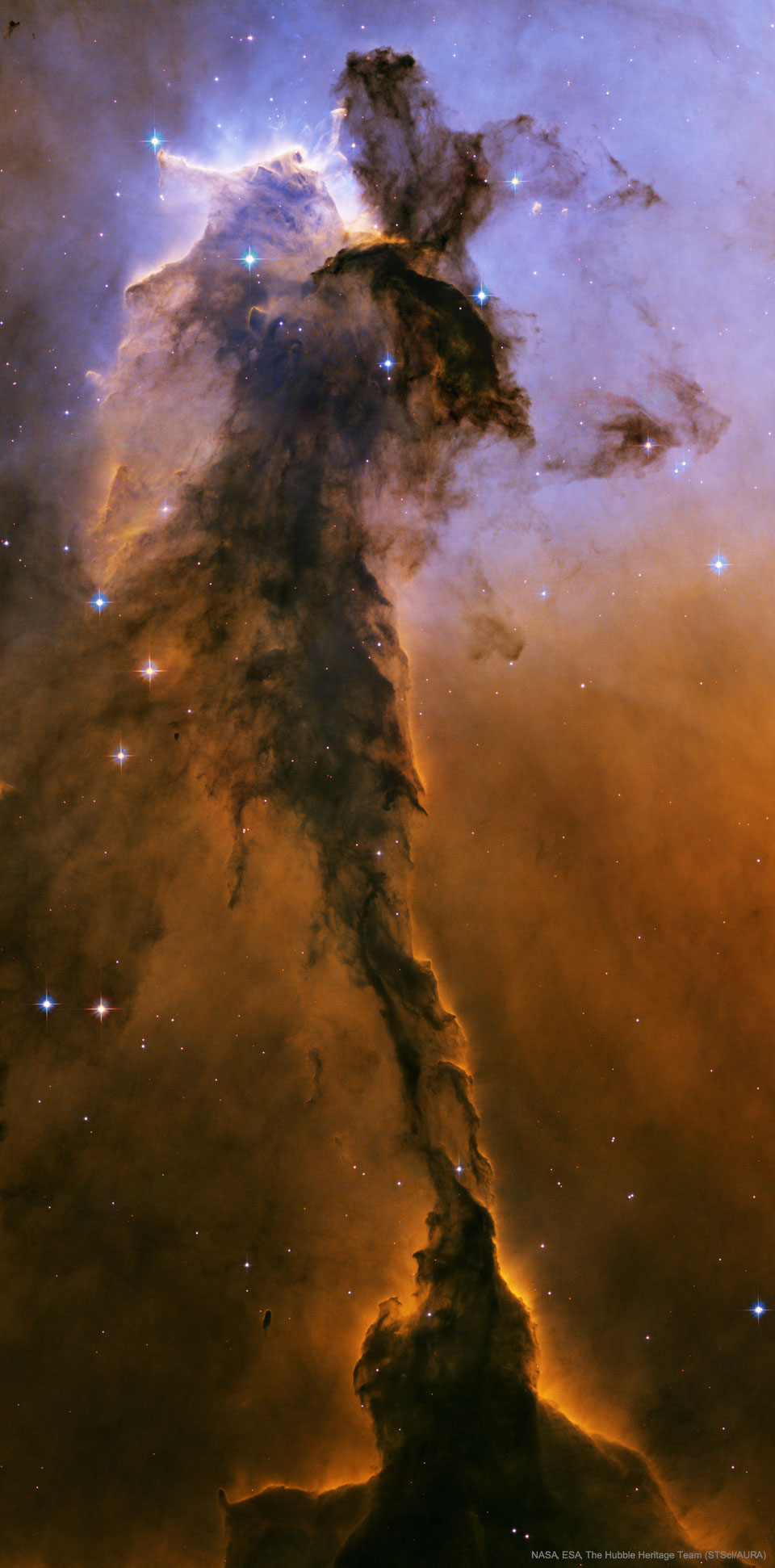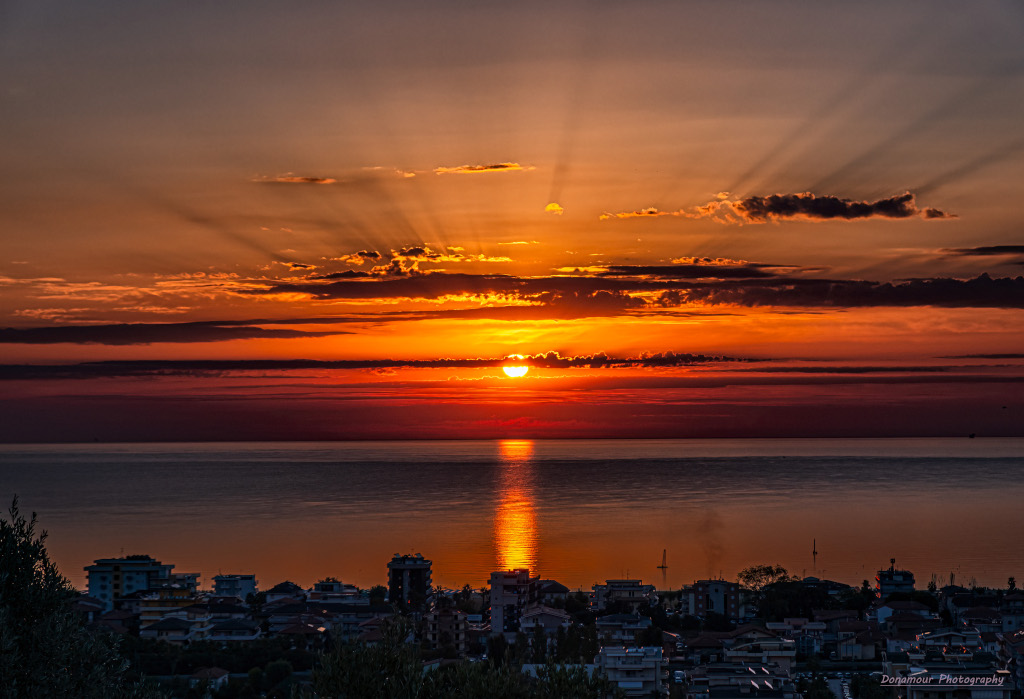안녕하세요, 잡학다식 입니다. 오늘은 과연 나사에서 어떤 방식으로 우주의 형상을 표현해 줄까요?
우선 이미지부터 볼 수 있도록 하겠습니다

해당 사진의 이름은 All the Water on Planet Earth 인데요 우선 NASA에서 공식적으로 발표한 설명들을 확인해 보겠습니다
How much of planet Earth is made of water? Very little, actually. Although oceans of water cover about 70 percent of Earth's surface, these oceans are shallow compared to the Earth's radius. The featured illustration shows what would happen if all of the water on or near the surface of the Earth were bunched up into a ball. The radius of this ball would be only about 700 kilometers, less than half the radius of the Earth's Moon, but slightly larger than Saturn's moon Rhea which, like many moons in our outer Solar System, is mostly water ice. The next smallest ball depicts all of Earth's liquid fresh water, while the tiniest ball shows the volume of all of Earth's fresh-water lakes and rivers. How any of this water came to be on the Earth and whether any significant amount is trapped far beneath Earth's surface remain topics of research.
이번에도 광활한 우주 앞에 인간이 얼마나 작은 존재인지 다시 한번 알게 되는것 같습니다
저는 내일도 더 좋은 사진과 함께 돌아오겠습니다, 그럼 행목한 하루 되시길 바랍니다
'과학상식' 카테고리의 다른 글
| NASA 나사의 오늘의 이미지들 (2022-09-28) (0) | 2022.09.29 |
|---|---|
| NASA 나사의 오늘의 이미지들 (2022-09-27) (0) | 2022.09.28 |
| NASA 나사의 오늘의 이미지들 (2022-09-25) (0) | 2022.09.26 |
| NASA 나사의 오늘의 이미지들 (2022-09-24) (0) | 2022.09.25 |
| NASA 나사의 오늘의 이미지들 (2022-09-23) (0) | 2022.09.24 |

